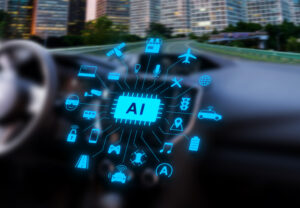Are Schools Equipped to Implement Trump’s Executive Order on AI?

New Executive Order on AI in K-12 Education
On April 23, President Donald Trump announced a significant executive order aimed at embedding artificial intelligence (AI) into K-12 education. This initiative primarily emphasizes the need for teacher training to effectively integrate AI into classroom instruction and administration workflows.
Focus on Teacher Training
One of the primary objectives outlined in the executive order is to ensure teachers receive adequate training on AI technologies. Secretary of Education Linda McMahon highlighted the necessity for educators to prepare the next generation of students to harness AI in their future careers. This involves integrating AI education into various subjects, not just technology-focused classes.
Pam Amendola, an English teacher at Dawson County High School in Georgia, expressed enthusiasm about the executive order. She acknowledged the urgent need for direction from the federal government, especially since many districts have yet to implement comprehensive AI training for teachers. Amendola has taken the initiative to educate her students about AI, despite the lack of formal training provided by her district.
Challenges in Implementation
Despite the positive reception from some educators, there are significant concerns regarding the execution of this plan. Many experts believe that the federal government may struggle to meet the goals set out in the executive order due to prior funding cuts and reduced expertise within the Department of Education. There is a growing skepticism about whether the necessary resources will be effectively allocated to bring about meaningful change.
The executive order tasks the secretaries of education and agriculture, along with the director of the National Science Foundation, with prioritizing grant funds and existing programs aimed at professional development. This includes creating opportunities for teachers to learn how to incorporate AI tools into their classrooms effectively.
Educators’ Need for Support
As educational environments rapidly evolve, school districts are grappling with an influx of AI products that promise to enhance learning. Dusty Strickland, assistant principal at North Murray High School in Georgia, pointed out that teachers are overwhelmed with their current responsibilities and may not have time to dive deeply into AI technologies.
Currently, teachers at Strickland’s school have the option to attend voluntary training sessions led by the district’s technology specialists. Those who participate often share their newfound knowledge with colleagues. Strickland is calling for increased federal funding to support AI training initiatives and for resources to discern quality professional development programs from lesser offerings in the market.
Concerns Regarding Ed-Tech Influence
While there is hope surrounding the executive order, concerns linger about the influence of ed-tech companies on the newly formed federal AI task force. Many educators believe that as districts adopt new technologies, they increasingly rely on vendor-driven solutions that may not always serve educational goals best. Amendola emphasized the importance of prioritizing guidance from organizations that focus on education rather than simply promoting AI products.
Critics like Randi Weingarten, president of the American Federation of Teachers, have expressed reservations about the potential pitfalls of the executive order. She cautioned that it may expose schools to unregulated tech companies and unreliable software, highlighting the risks inherent in AI technologies, including privacy issues and misinformation.
Areas for Improvement in the Executive Order
While there is bipartisan support for integrating AI into schools, experts have identified crucial gaps in the executive order. Notably absent are considerations for student data privacy and the ethical implications of AI, such as inherent biases in algorithms. These concerns are vital as schools grapple with a landscape where AI tools are becoming increasingly prevalent.
Furthermore, the executive order’s focus primarily on workforce training misses the broader educational opportunities that AI could unlock. Experts argue that AI should be framed as a tool for enhancing teaching and learning rather than solely as a means to prepare students for future jobs. This new perspective could unlock greater benefits for both educators and students.
In summary, the executive order introduces a necessary step towards integrating AI into K-12 education. However, realizing its full potential will require a concerted effort to address funding, support for educators, and the ethical implications of technology in educational settings.






